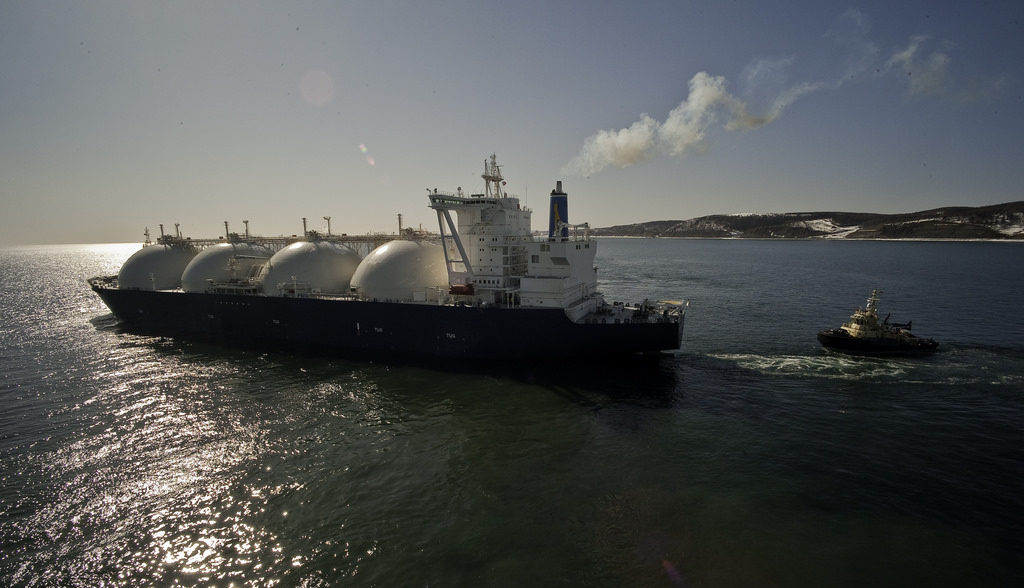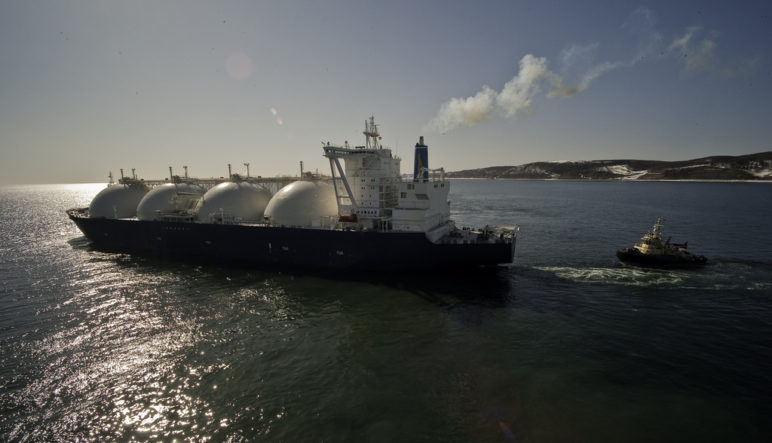Refining
LNG facilities are, in essence, refineries for methane gas. They receive relatively “raw” methane gas by pipeline, remove impurities, and liquefy the refined gas for storage or export. Some of the impurities, such as water vapor and sour gas, are removed to meet pipeline specifications or because they damage equipment. Other impurities, such as propane, butane, and ethane, are removed for sale—they often have higher sales values than the pipeline gas itself. Much of North America’s LNG exports are “unconventional” gas resources—meaning the gas is fracked.
Liquefaction
After raw methane gas has been processed, the refined gas that will be distributed to consumers is 85 to 95 percent methane, depending on the source of the gas. It also contains small amounts of other gases such as ethane, propane, and nitrogen. Some of the refined gas powers equipment at the facility, while most of it is piped to equipment that cools the gas to -260° F (-162° C). At this temperature, it changes state from gas to liquid, taking up 1/600th of the volume it occupied as a gas. This volume reduction means companies can store or transport the natural gas in much larger quantities.
The equipment used to cool the gas makes up a “liquefaction train,” which has similar components to a household refrigerator. It includes a device where the gas is chilled (called a “heat exchanger” or “cold box”), a compressor that chills the refrigerants, and a power source that drives the compressor. The power source is typically a gas or steam turbine, similar to those found in oil refineries, power plants, and large chemical plants. Gas-driven turbines have been standard for over 30 years, largely replacing steam turbines. Some LNG facilities have just one liquefaction train, but most LNG facilities have more than one, producing greater energy demand and higher emissions.
After liquefaction, LNG is stored in a tank that keeps it cold enough to remain in liquid form. Maintaining the cryogenic temperature of LNG consumes a lot of energy, which is why large facilities usually have power generation stations on-site. Liquefaction and power equipment generate the most sizeable share of emissions at an LNG facility.
Facility types
At a “peak shaving” facility, methane gas is refined and stored as LNG for peak demand during winter months, when it is re-gasified and distributed to natural gas customers. At an export facility, methane gas is refined and stored as LNG until it is loaded onto export tankers. At other facilities, such as marine bunkering facilities or import terminals, the LNG is stored until needed for regional sales or to fuel marine vessels.
Emissions sources
LNG facilities produce emissions in at least five different ways:
- Fuel-fired equipment powers a facility’s gas refining and refrigeration processes by burning methane gas and produces the largest portion of a facility’s emissions.
- Venting removes surplus gases from processing equipment and disposes of waste gas. As a normal part of liquefaction and storage at an LNG facility, venting releases the greenhouse gases methane and CO2 directly into the atmosphere.
- Flaring burns waste gases, converting them into carbon dioxide and nitrogen oxide as well as other pollutants like carbon monoxide and particulate matter.
- “Fugitive emissions” of methane gas escape directly into the atmosphere from various pieces of equipment, including pipelines that feed gas to facility equipment.
- Marine emissions are released from the LNG tankers, many of which run on heavy fuel oil and emit related pollutants, including particulate matter, a significant contributor to lung and heart conditions in humans. An LNG tanker typically spends around 24 hours at port, and some facilities would likely have multiple vessel calls per week.








